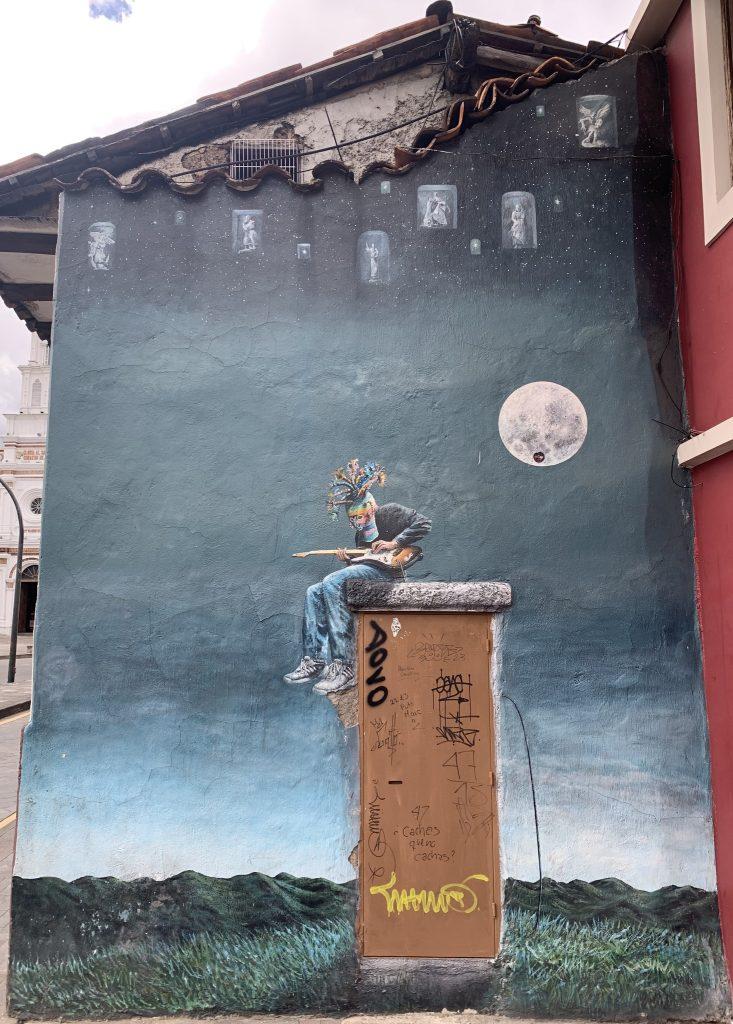
One thing we look for in choosing where to spend our winter months is a wide variety of cultural activities, and especially live music. When I was in my late teens and 20s I couldn’t go to clubs because I was allergic to cigarette smoke and live music clubs were choked with it. Luckily, smoking is no longer allowed in clubs and restaurants in much of the world. So now, as an early retiree, I’m finally getting to enjoy going out in the evenings to listen to live music. One great thing about a town like Cuenca, Ecuador, is that there are many options and, unlike back home, several of them start early enough in the evening that even my “early-to-bed, early-to-rise” husband can enjoy them.
This small city seems to be a magnet for Latin American musicians. There are many cafes and restaurants in which they perform, in addition to the major venues such as the Teatro Pumapungo and the stadium. Given the large expat population (~10,000 people) it is also a place where 70s and 80s tribute bands thrive and where musical expats can live out their performance dreams. On top of that, there are local marching bands entertaining in the streets at least a couple of times a week!
Table of Contents
La Guarida
One of the first cultural venues we discovered was La Guarida. Run by Cuenca native, Andrés Zambrano, it offers gourmet food paired with culture: international films two or three nights a week, live music on Thursdays, a gourmet tasting menu on Fridays, and sometimes other special events such as a jazz brunch, or a workshop on the basic elements of plating.
Andrés originally opened it as a cultural centre and added the restaurant component later, concluding that it was more feasible to earn a living combining the two. It is clear at every performance we attend there that he is completely committed to the community — to Ecuador and to the artists of all sorts within it. He is incredibly generous in sharing the stage with others, even promoting new restaurants that open nearby and could easily be seen as competitors.
We’ve been several times and never been disappointed by the food or the music.
The first show we saw there was Argentinian singer, Ines Crespo, who took us on a musical tour of songs from different parts of Argentina.
Next up was an evening of cumbia and other Latin American music by Sal Prieta. A few days later we saw them on one of the floats at the Carnaval parade.
La Guarida’s building is owned and was renovated by Andrés’ mother. She loves cumbia, so this time she and a bunch of her Ecuadorian friends were there too, inspiring us timid expats to get off our butts and dance!
Although he’s working to expand the audience beyond the expat community, it is a struggle. Apparently the neighbourhood used to have a bad reputation with locals, so even though it is safe now, it’s not easy to convince Cuencanans of that. According to our Spanish teacher here, another challenge is that people from Cuenca don’t have a strong tradition of going out for dinner. They might eat almuerzo (lunch) out, but dinner normally takes place with family, at home.
Sucre Sale
Our introduction to the strong musical community culture here continued early in our trip, when we were looking for a place to get out of the rain on a Saturday afternoon and heard music coming from Sucre Sale, a tiny café off the main square in the Centro Historico.
We wandered in and discovered that it wasn’t a formal performance, but rather some musicians (one of whom was also working behind the counter) jamming. Only later did we discover that they included four high-profile local performers: Kike Pacherres (originally from Peru), Manuela Calleja Valderrama (originally from Spain), and Naza Gomez (originally from Argentina) and Cristian Ávalos (from a different part of Argentina). As the weeks went on, we saw each of them performing elsewhere, in different combinations.
Sucre Sale hosts many musical performances each week, including live jazz. We went one night to hear our exercise trainer, Jose Gabriel Cabeza, perform as part of a jazz quartet. A Venezuelan, he has at least a couple of gigs each month playing bass.
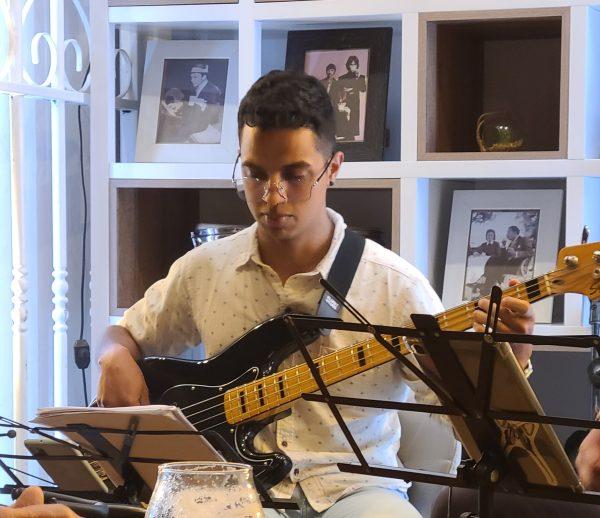
IdiomART
Another fun venue in town is IdiomART. In addition to a wide range of classes (art, language, drumming, dance, etc.) it hosts a monthly Patio Concert. We’ve been to two of them so far, and they both had great music. They also exemplified the culture of musical sharing and collaboration that exists here, with the star attractions readily welcoming others to the stage and sharing the limelight.
When we went to hear Kike Pacherres and German Coppola we recognized that Kike was one of the folks we’d heard jamming at Sucre Sale.
IdiomART is run by long-time expat American, Sarah HB. When Kike invited Sarah to the stage to sing, we discovered that her talents extend beyond running a cultural centre and making everyone who is new feel welcomed: she’s got a beautiful voice. He also invited her partner, percussionist Diana Moscoso, to join in.
We later saw Sarah and Diana perform as part of the expat group, Northern Roots, at La Guarida.
Continuing the intermixing musical pattern in this town, we heard more of the crew we’d found that day at Sucre Sale at our second IdiomART patio session. The official performance was by a group called Kafuné.
I’d thought, looking at the lead singer, that she could be Spanish. Turns out, she is. Manuela Calleja Valderrama is from Seville, Spain. Her companion, guitarist, Cristian Avalos, is from Formosa, Argentina. They performed songs from many regions, in Portuguese, Spanish, French and English.
During the event they invited Naza Gomez (the one who’d also been working at the restaurant the first day we saw them jamming) to perform both with them and solo. He’s an incredibly talented musician from Buenos Aires, Argentina. Listening to him sing, I wondered if he had originally trained in opera. He could certainly do well as an opera singer, but I get the sense he’d rather rock out.
They also invited visiting Peruvian musician, Mario Maywa, to play a few songs.
Teatro Pumapungo
I felt like we’d come full circle when we finally attended a show at a large venue, the Teatro Pumapungo. The star attraction was Gabonese Afro-pop (or Afro-jazz) singer, Pamela Badjogo. During her show she invited some local kids to join her on stage for a song they’d workshopped with her for an intense day before the show. She also invited up — yes, we saw him again — Naza Gomez, along with a local female singer whose name I missed, but who has an incredible voice. And the folks from Kafune and their Peruvian guest were sitting behind us in the audience. It really is a small — but talented — community!
Jazz Society Cafe
I’d seen the name Luis Ullauri many times since coming to Cuenca and we finally got to see him perform at the Jazz Society Cafe. We hadn’t gone there earlier because we aren’t huge jazz fans. (Though we did hear some amazing jazz at the Malaga Jazz Festival last fall). Turns out that, despite the name, they host other types of music too. The location is less convenient for us, as we like to walk everywhere. It is fairly far west in the city in the area nicknamed “Gringolandia” because many expats live out there. But even so, it was just over a $2 cab ride from our home. (I love the fact that taxis are so cheap and plentiful here, but I do wish they had seatbelts!)
We had an interesting conversation with Luis about the pros and cons of performing English-language songs. We hate it when local performers do that; we are here to hear their music, not ours. But many expats love it, and, apparently, the tips if you are doing street performances are better if you play familiar English-language songs. (Interestingly, he said that Ecuadorians, as opposed to gringos, were particularly drawn to the English language street performances. Maybe that shouldn’t surprise me: it’s the inverse of us preferring to hear the Spanish ones.)
Luckily for us, all his songs that night were in Spanish, though one of them was a Spanish-language version of Charles Aznavour’s French-language song, La Boheme.
Classical Music Venues
We took in two classical music performances last week, and there have been others that we missed. The Teatro Pumapungo is the main venue for the local symphony orchestra (and their performances are free to the public), but there are other groups and other venues.
The first one we saw, performed in the Old Cathedral, included a full choir and three internationally recognized soloists performing Handel and Haydn: soprano Olga Vresca, baritone Jorge Regalado, and pianist Pilar Rodriguez. Unfortunately, from where I was sitting in the packed cathedral, I couldn’t get you a video clip. I was struck by how white-skinned the performers were. I guess it is natural that European music would be more common as a pursuit among the Spanish descendants than among indigenous Ecuadorians.
That said, there was not the same white skew when we went to another outstanding classical performance a few days later at the University of Cuenca. This massive production of Antonin Dvorak’s Stabat Mater involved 5 choirs (some 80+ singers), plus the University’s full symphony orchestra and several featured soloists. Some people were taking video during the performance, but I found it annoyingly distracting in the darkened hall, so I didn’t take any. The closest I came was this snapshot before they had started playing (and, stupidly, before the soloists were on stage. One of them, soprano Vanesa Regalado, looked so delightfully operatic! I wonder if she is related to Jorge Regalado, the baritone we heard at the Cathedral.)

Other Music Venues in Cuenca
I haven’t had a chance to explore them all, but a few others that come up frequently are:
If you are looking for a retirement destination with lots of live music options, Cuenca, Ecuador, is definitely a city you should consider. This is one thing I will definitely miss when we leave Cuenca in a few days.
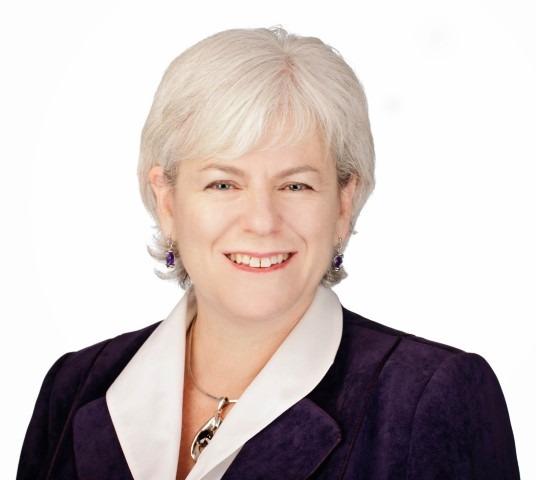

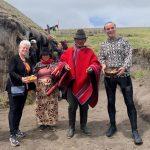
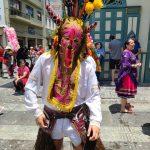
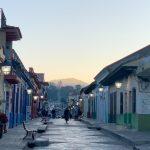
[…] already written about the fantastic music scene in Cuenca. We’ve also enjoyed dance performance, street performances, parades and processions. We even […]